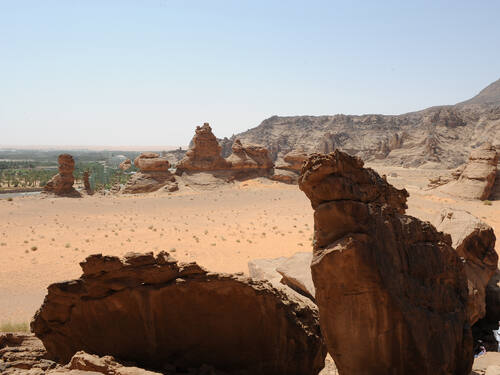 |
| 2/7. General view of Jabal Umm Sinman complex, one of the two richest rock art complexes in the northern region of Saudi Arabia. |
This site includes two components situated in a desert landscape: Jabel Umm Sinman at Jubbah and the Jabal al-Manjor and Raat at Shuwaymis. A lake once situated at the foot of the Umm Sinman hill range that has now disappeared used to be a source of fresh water for people and animals in the southern part of the Great Narfoud Desert. The ancestors of today’s Arab populations have left traces of their passages in numerous petroglyphs and inscriptions on the rock face. Jabal al-Manjor and Raat form the rocky escarpment of a wadi now covered in sand. They show numerous representations of human and animal figures covering 10,000 years of history... whc.unesco.org
Actualización 08-08-15: La vida de los antiguos árabes grabada en el árido desierto saudí de Hail
EFE. Las milenarias pinturas rupestres y petroglifos de dos zonas del desierto de Hail, en el norte de Arabia Saudí, declaradas patrimonio cultural de la humanidad por la Unesco el pasado julio, reflejan la vida diaria de los árabes que habitaron estas tierras entre 5.000 y 10.000 años atrás.
"El antiguo árabe, como los pueblos de otras civilizaciones antiguas, inmortalizó en la roca su vida diaria en Shueimes y Yobba", subrayó a Efe el experto en arqueología saudí, Abdalá al Rashid.
Al Rashid destacó que la importancia de estos dibujos rupestres "radica en que son muy escasas las informaciones de que se disponen sobre esas épocas antiguas, por lo que estos petroglifos podrían ayudarnos a tener una idea de esos antiguos habitantes y las actividades que desarrollaban"...







1 comentario:
Actualización: La vida de los antiguos árabes grabada en el árido desierto saudí de Hail
Publicar un comentario